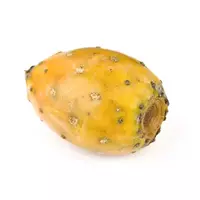Indian prickly pear (fig)

Everyone knows what a plant like a cactus in its natural habitat grows in a hot tropical climate. At the same time, cacti are considered popular domestic plants and are often found in the homes of flower lovers throughout planet Earth. Odanco, few know that cacti can be edible and even healthy plants.
In fact, there are not many edible varieties of cacti. Researchers call the territory of modern South America the birthplace of edible cactus species. For thousands of years, edible cacti formed the basis of the diet of the ancient civilizations that inhabited the American continent. Edible cacti occupied a special place in the culinary tradition of the Aztecs.
Nowadays, edible cacti have not lost their relevance. Plants are actively consumed, and are also used to prepare a variety of culinary products in Mexico, as well as in Asian countries. It is worth noting that cacti, which belong to the genus Opuntsiev, are eaten. Perhaps the most striking representative of the Cactus family, which are used in cooking, can be considered Indian (fig) Opuntia or Opuntia ficus-indica.
In addition to the scientific name prickly pear, Indian (fig) has a number of folk names. Often Indian prickly pear (fig) is called nothing more than an Indian fig, fig, tzabr or prickly pear. Indian prickly pear (fig) is cultivated on an industrial scale to harvest the fruits of the plant, which are eaten.
In its biological structure, fig prickly pear is a cactus, the stems of which are covered with spines and reach, as a rule, 4 meters in height. In cooking, the fruits of the plant are used, which in their appearance resemble a pear, and also differ in different colors depending on the subspecies of the cactus. There are fruits of tsabra red, light yellow, as well as green.
It is worth noting that the flesh of the fruits of the Indian fig varies depending on the subspecies. However, white, almost translucent or red, as well as brown or yellow pulp of prickly pear fruits will be distinguished by their pleasant sweet taste. In addition, the pulp of fig prickly pear will necessarily contain a large amount of seeds.
Researchers believe that such a species of edible cactus as a tzabr originally grew in modern Mexico. Currently, the prickly pear cactus is native to the Philippine Islands, in the Mediterranean region, namely France, Portugal, Italy. In addition, fig prickly pear is cultivated in Israel, Tunisia, Ethiopia, Algeria, India and Chile, Madagascar and even in the south of Crimea.
Tsabra fruits are used in writing both in fresh and in the form of preliminary thermal processing. Jam is in particular demand. Prepared from tsabra fruits. It is worth noting that in the territories of tsabra growth, the fruits of the plant are used both in ripe and green form. For Mexicans, for example, tzabr is a common vegetable that is boiled, dried and used fresh. In addition, young tsabra shoots are eaten.
prickly pear of Indian (fig) 41 kCal
The energy value of Indian prickly pear (fig) (Ratio of proteins, fats, carbohydrates - ju):
Proteins: 0.73 g (~ 3 kCal)
Fats: 0.51 g (~ 5 kCal)
Carbohydrates: 5.97 g (~ 24 kCal)
Energy ratio (b | y): 7% | 11% | 58%
 Español
Español Français
Français Português
Português Русский
Русский 简体中文
简体中文 繁體中文
繁體中文 日本語
日本語 한국어
한국어 العربية
العربية Türkçe
Türkçe Қазақ
Қазақ Deutsch
Deutsch Italiano
Italiano Українська
Українська
